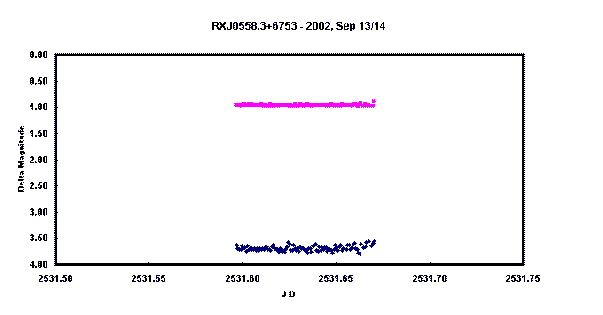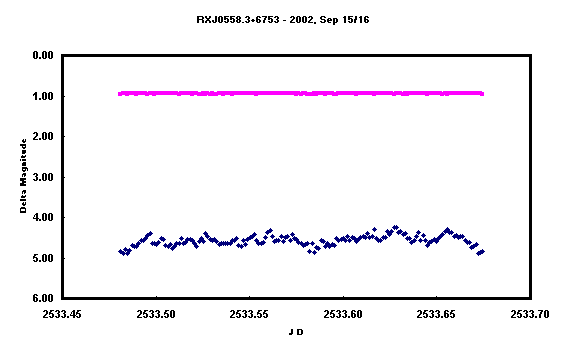RXJ0558.3+6753 during September 2002 outburst.
The light curve below
of RXJ0558.3+6753 was obtained on the night of
September 13/14, 2002 at CBA Belgium Observatory,
using our regular equipment (0.35-m f/6.3 SCT and
unfiltered ST-7 CCD), under very good sky
conditions. No obvious large-amplitude modulations
are seen.

Two nights later (Sep
15/16, 2002), I had another CCD photometry session
under excellent sky conditions. The variable was
observed for over 4.6 hours. Compared to my Sep
13/14 observations, the variable had faded by 1.0
mag.
Contrary to the Sep
13/14 observations, the resulting light curve of
RXJ0558.3+6753 this time shows obvious large
amplitude modulations, up to 0.4 - 0.5 mag (see
below). Although a visual inspection of the light
curve seems to indicate some periodicity in the
signal, this is not directly confirmed by any of the
period analysis programmes I'm using.
The variable very
likely is on its way back to quiescence, but I would
like to ask all observers to keep a close eye on
this object for possible rebrightenings, and future
outbursts. It is clear that the determination of the
true nature of RXJ0558.3+6753 will require intensive
follow-up observations.

After publication of
my observations on VSNET, the following comments
were received from John R. Thorstensen, Professor of
Physics at Dartmouth College :